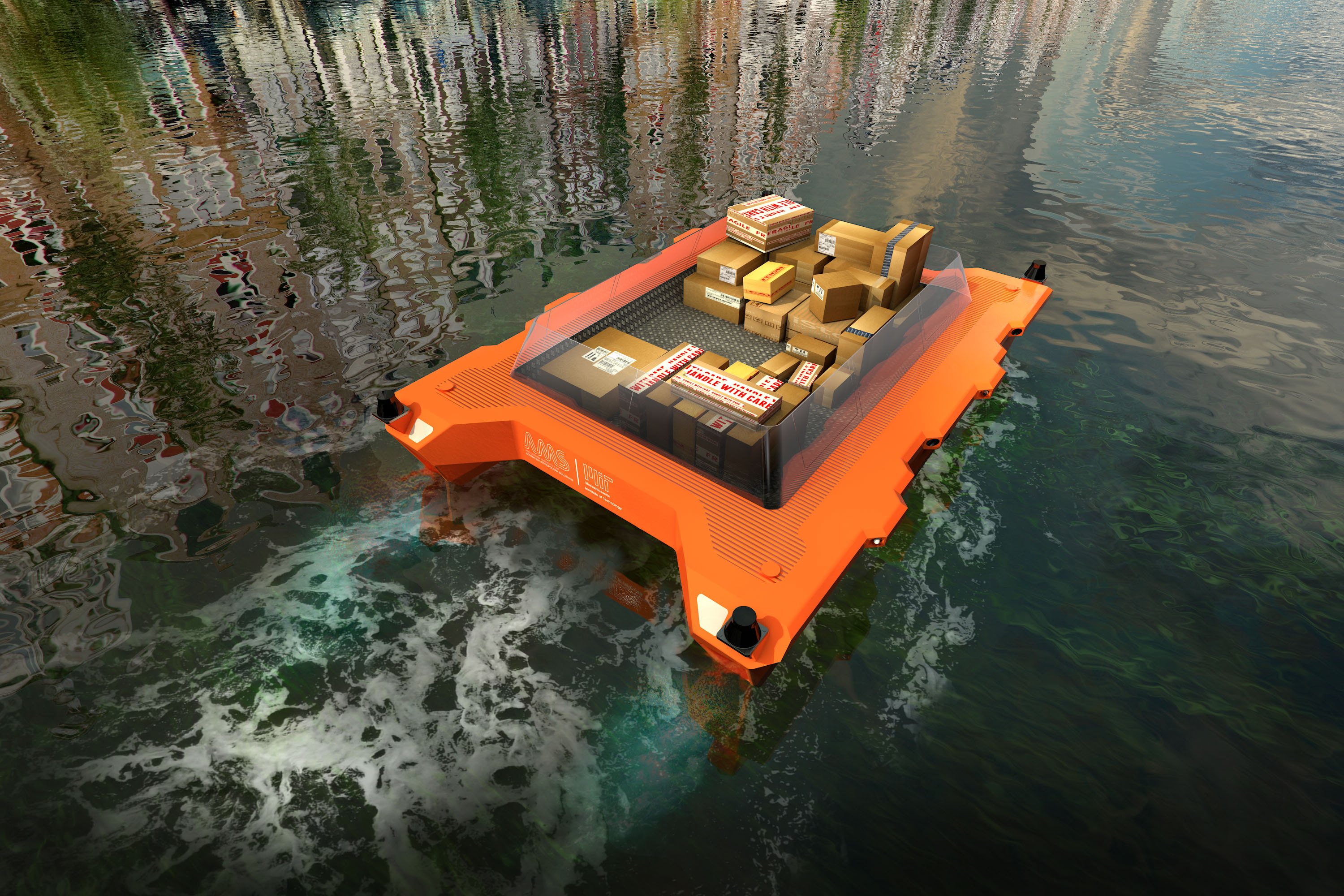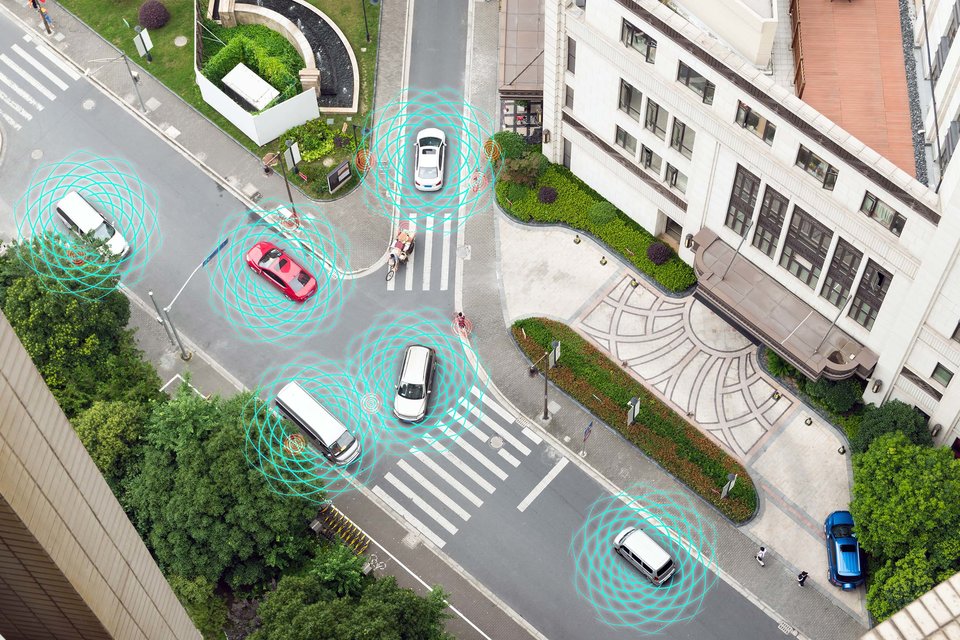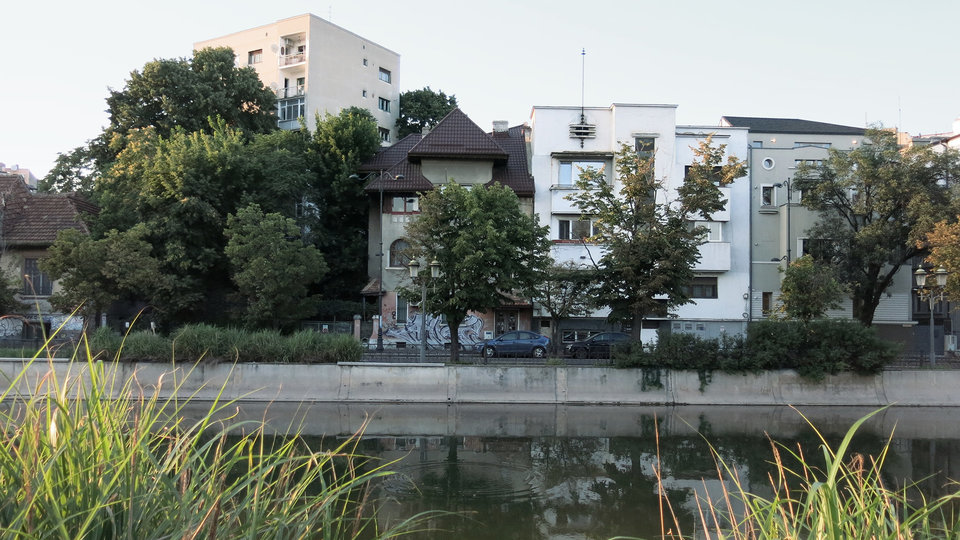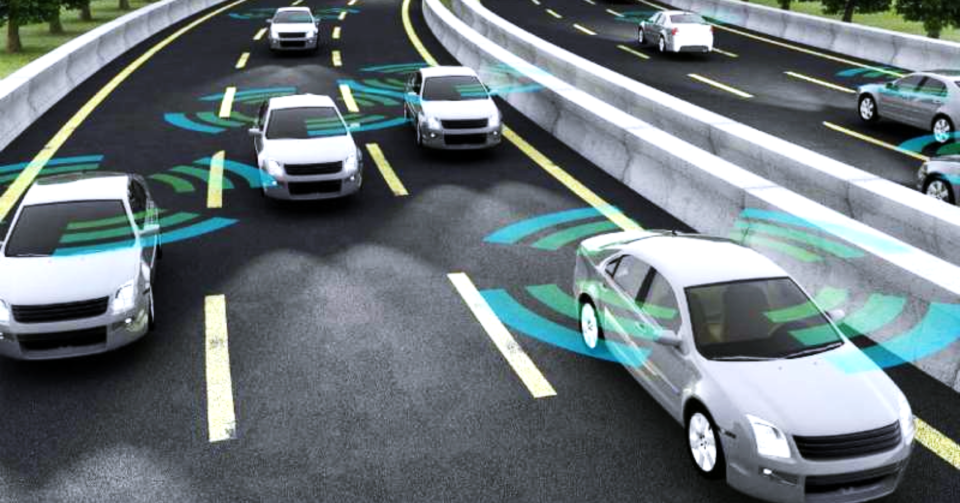In a few years' time autonomous boats will probably sail through every Amsterdam canal. These Roboats can be used for numerous applications: from waste collection to inspecting quay walls. The Roboat is being developed by the Amsterdam Institute for Advanced Metropolitan Solutions (AMS Institute), which was co-founded by TU Delft.
When you think of Amsterdam, you think of canals. So it’s only logical to include the city’s waterways for solutions to challenges faced by the metropolis. ''Roboat is more than a self- driving boat”, says Stephan van Dijk, head of Research and Valorisation at AMS Institute.
Van Dijk sees the Roboat as a platform that can be used for all kinds of things. Obviously, you can use it for carrying goods and people. “But you could also line up the boats to build a temporary footbridge. Or use them as a floating stage on the water.” By linking them together, Roboats could also be used to build all kinds of structures.
Floating supermarket
City planners are excited about the idea, because it adds flexibility to the urban infrastructure. “Today, things still have a fixed place, but in a few decades’ time you may well stumble across a floating market or temporary supermarket on the water.” Inspection of quay walls and bridges is another task for which the autonomous boats could be used. There are more than 200 kilometres of waterways in Amsterdam, and they will require a lot of maintenance in the coming years. At present, there is simply not enough manpower available to inspect all the city’s waterways. But with Roboats, this will happen automatically. During its journey, the boat automatically records its surroundings - bridges, quays, houseboats, obstacles on the water – with LIDAR and stereo- cameras, which can be analysed afterwards by image analysis software.
Water quality
Or how about measuring water quality? That’s also something that can be easily combined with the other tasks performed by Roboats. They will soon be plying the city’s waterways, enabling the city to accurately monitor surface water quality. This will be done in close collaboration with Waternet.
Although many of the applications are still a thing of the future, the project team is actively working on developing use cases where Roboats can be used to collect household waste in the Amsterdam city centre. At present, this is a major problem. “There is hardly any room on the narrow streets of the canals, and we have 17 different waste collection services driving through the city with large trucks, causing traffic jams”, summarises Van Dijk. Moreover, it is very difficult to construct underground containers, because in many cases the quay walls are fragile and unsuitable for this purpose.
Floating waste bins
A fleet of Roboats could manage those tasks. This works as follows: floating waste bins are moored alongside the quay. Using a smart system, people can throw their waste from the street into the bins, just as they are used to doing now. The waste bin is fitted with a sensor which transmits a signal when the bin is full, and along comes a Roboat which disconnects the waste bin from the quay and takes it to the waste disposal plant. In the meantime, another Roboat arrives with an empty waste bin to replace the full bin. All of this is done at night, because the Roboats are fitted with electric motors and are therefore very silent.
“With around forty of these floating waste bins and a few self-driving Roboats, you can dispose of the same waste volumes that we handle today, servicing 1100 households”, says Van Dijk. The Roboats themselves determine the ‘smartest’ route and can have multiple waste bins in tow at a time.
Pilot project in 2021
This may also sound somewhat futuristic, but the plan is to actually launch a pilot project in 2021. “We have now developed everything on a small scale and are working on the autonomy and algorithms of the boats”, explains Van Dijk. Research is also being carried out on the transport system: what exactly should the waste bins look like and how will the system work. “By next summer, we will have the first two prototypes of a waste bin and a tug boat, which we want to test in practice in the Amsterdam canals.”
If the 2021 pilot is successful, this will mean the technology is sufficiently developed to be implemented by a commercial party. “It could be a spin-off from AMS Institute or another party.” Van Dijk notices a growing interest in the Roboat from the maritime sector as well as from large Japanese and German electronics manufacturers. The latter includes suppliers of sensors and batteries.
DThis growing interest from the business community is no coincidence. In the field of autonomy, the Roboat is already leading the way, says Van Dijk. “In our case, it involves a two-by-four-metre boat that needs to be very flexible. Since our perspective is completely different from that, for example, of the car industry, we can develop autonomous systems more easily and quickly.”
Driving force for applied technology
When it comes to integrating solutions in the city, the AMS Institute is a driving force. This is entirely thanks to the close collaboration with the City of Amsterdam. “As a result of this partnership, we have a very good understanding of the problems faced by this metropolitan region and the practical solutions required for solving these problems”, says Van Dijk. In addition, the researchers have access to all the relevant aldermen and policy makers. “From day one, you’ll be sitting together with the right people.” “This gives us true insight into the issues at hand.
As a result, our innovations have a greater chance of succeeding in the market. Because there is a demand for them.” These are important considerations for companies to work with the AMS Institute. It all comes together wonderfully in the Roboat. “This is a project after my own heart. It involves science that you can immediately translate into a practical application.”





